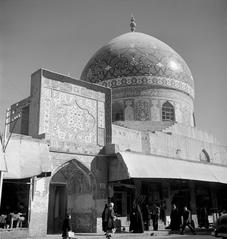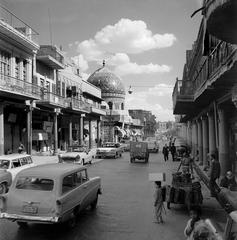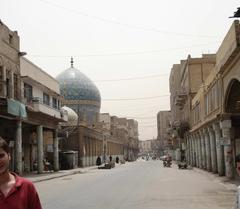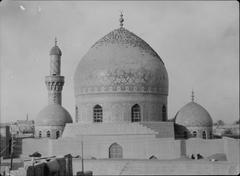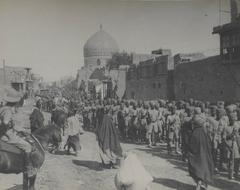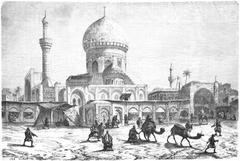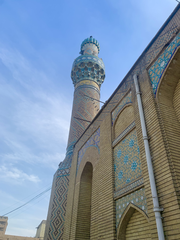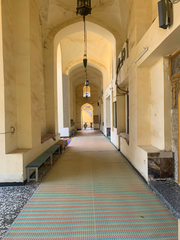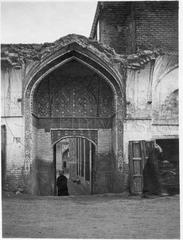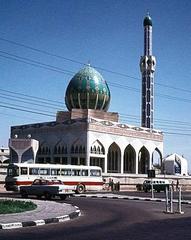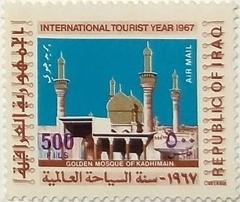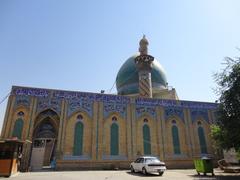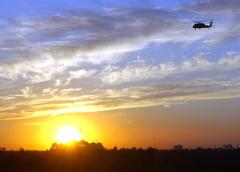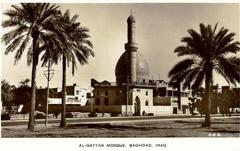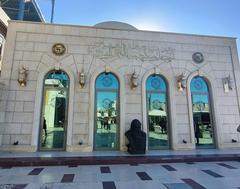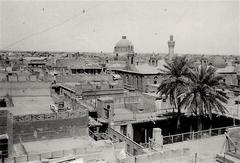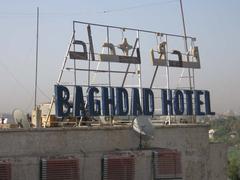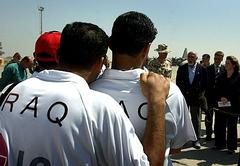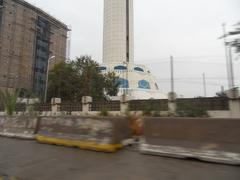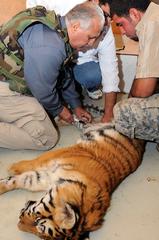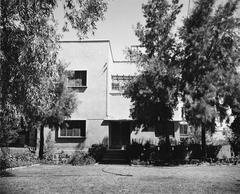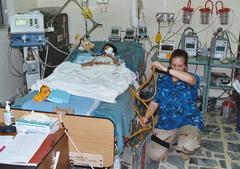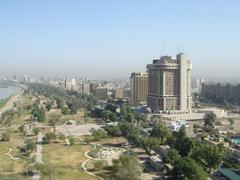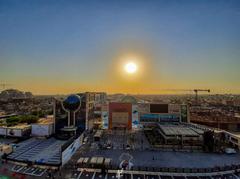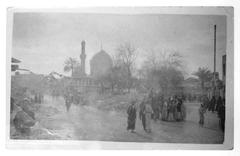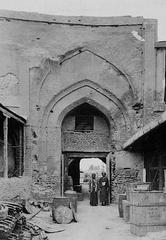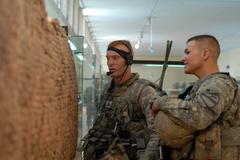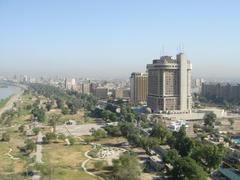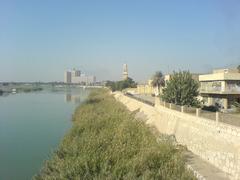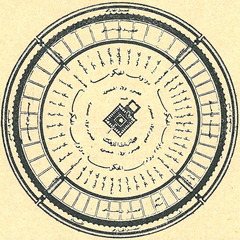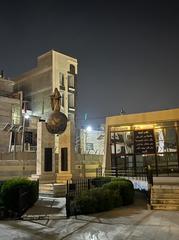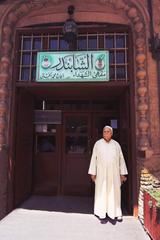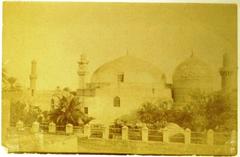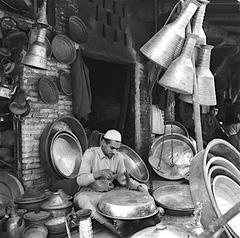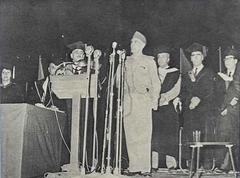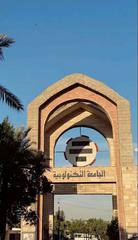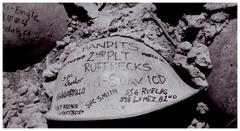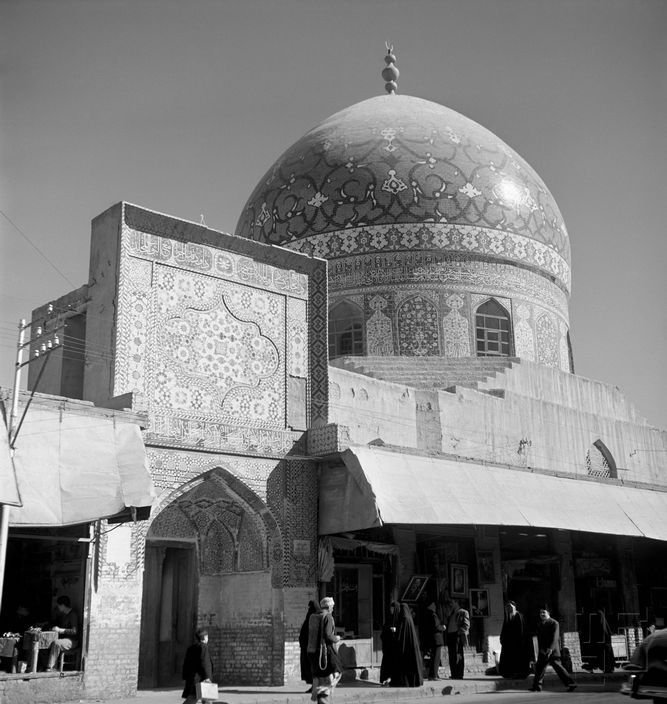
Comprehensive Guide to Visiting Haydar-Khana Mosque, Baghdad, Iraq
Date: 24/07/2024
Introduction
The Haydar-Khana Mosque, situated in the heart of Baghdad’s historic al-Rusafah neighborhood, epitomizes the city’s profound cultural and architectural legacy. Constructed in 1826 under Daoud Pasha, the last Mamluk governor, this mosque is an architectural marvel that showcases the influences of the Ottoman era (IINA). Its rich historical tapestry includes pivotal roles during the Abbasid Caliphate and the 1920 Iraqi Revolt against British colonialism, earning it the nickname ‘Revolution Mosque’ (Wikipedia). Beyond its historical significance, the mosque is a vibrant cultural and educational hub, home to several madrasas and a library with works by prominent scholars (Wikipedia). This guide explores the Haydar-Khana Mosque’s history, architectural splendor, and provides practical information for visitors, making it an essential read for anyone planning to experience the rich heritage of Baghdad.
Table of Contents
- Introduction
- Historical Background
- Renovations and Historical Events
- Cultural and Educational Role
- Architectural Details
- Modern-Day Significance
- Visiting Information
- Conclusion
- FAQ
Historical Background
Origins and Early History
The Haydar-Khana Mosque is a significant historical and architectural landmark dating back to the Abbasid Caliphate, a period marked by substantial cultural and scientific advancements in the Islamic world. The locality of Haydar-Khana itself is one of the oldest in Baghdad, with its roots tracing back to this illustrious era (Wikipedia).
The name “Haydar-Khana” is derived from the Arabic word “Khana,” meaning “settlement.” The origins of the name “Haydar” are somewhat disputed. Some sources attribute it to a Sufi man named Haydar, whose history remains largely unknown. Others link it to Haydar Pasha Jalabi Shabandar, an Iraqi notable who established Hammam Haydar in the locality in 1650 and is buried there along with some family members (Wikipedia).
Construction and Architectural Significance
The mosque was constructed in 1826 under the supervision of Daoud Pasha, the last Mamluk governor of Baghdad. This period was characterized by the Ottoman Empire’s influence, which is evident in the mosque’s architectural style. The primary structure of the mosque is crafted from brick and features a courtyard enclosed on three sides by walls, with the fourth side, the qibla wall (the wall that faces Mecca), looking out onto the street. The qibla wall is adorned with ornate pointed arches and intricate calligraphy in kashi blue and gold tiles (IINA).
The mosque’s principal entrance is marked by an imposing iwan gate, a hallmark of Islamic architecture. Within the courtyard, the primary building features a symmetrical rectangular layout divided into three sections—the masala or prayer hall, a portico, and a minaret. Each section is adorned with striking kashi blue tiles. The central arch, serving as the main entry point, is decorated with muquarnas, and the founder’s inscriptions are showcased on a smaller pointed arch within the large iwan gate (IINA).
Renovations and Historical Events
The Haydar-Khana Mosque has undergone several renovations since its initial construction. Significant refurbishments took place in 1893 and 1920, ensuring the preservation of its architectural integrity and historical significance (IINA). The mosque’s role in the socio-political landscape of Baghdad became particularly prominent during the early 20th century.
In 1920, the mosque became a focal point for the Iraqi Revolt against British colonialism. The notables of Baghdad gathered at the mosque, which earned it the nickname “Revolution Mosque” among Iraqis. The mosque witnessed numerous arrests by British forces as it served as a major center for uprisings launched from al-Rasheed Street (Wikipedia).
Cultural and Educational Role
Beyond its architectural and historical significance, the Haydar-Khana Mosque has played a crucial role in the cultural and educational life of Baghdad. The mosque includes a number of madrasas for teaching Islamic sciences and a library containing works by some of the most prominent scholars in the country (Wikipedia). This educational aspect underscores the mosque’s importance as a center for learning and intellectual discourse.
The locality of Haydar-Khana has been home to many prominent Iraqi personalities, including the artist Nazem al-Ghazali and former Iraqi Prime Minister Nuri al-Said. Poets such as Jamil Sidqi al-Zahawi recited poems in the Haydar-Khana Mosque, further cementing its status as a cultural hub (Wikipedia).
Architectural Details
The architectural details of the Haydar-Khana Mosque are a testament to the craftsmanship and artistic sensibilities of the time. The portico, accessible through three small doors on each side, is topped with windows and enclosed by tall narrow arches. The portico is supported by four robust piers and crowned with five domes. Hazarbaf brickwork motifs adorn the blind arches on the piers, contributing to the mosque’s impressive architectural charm (IINA).
The mosque’s compact scale does not detract from its architectural grandeur. Despite its modest size, it stands as a testament to the architectural artistry of its time, captivating visitors with its harmonious proportions and intricate detailing (IINA).
Modern-Day Significance
Today, the Haydar-Khana Mosque remains a significant landmark in Baghdad, attracting both worshippers and tourists. Its historical and cultural importance, coupled with its architectural beauty, makes it a must-visit destination for anyone interested in the rich history of Baghdad and the broader Islamic world.
The locality of Haydar-Khana, despite being one of the poorer neighborhoods in Baghdad, continues to be a place of historical and cultural significance. It is home to some of the oldest families in Baghdad and has been a haven for artists, writers, poets, and intellectuals. However, the area currently suffers from neglect, with narrow alleyways and roads filled with rubbish, and many apartments abandoned or turned into warehouses (Wikipedia).
Visiting Information
Visiting Hours and Tickets
The Haydar-Khana Mosque is open to visitors from 9:00 AM to 5:00 PM daily. Admission is free, but donations for the upkeep of the mosque are welcome. It is recommended to dress modestly and respect the cultural norms when visiting.
Travel Tips
- Accessibility: The mosque is accessible by public transportation, and taxis are readily available in Baghdad. It’s advisable to check for any travel advisories before planning your visit.
- Nearby Attractions: While in the area, you can also explore other historical sites such as the Al-Mustansiriya School and the Abbasid Palace, both located within a short distance from the mosque.
- Guided Tours: For a deeper understanding of the mosque’s history and architecture, consider hiring a local guide. Guided tours can provide valuable insights and enhance your visit.
- Photography: The mosque offers several picturesque spots, especially around the courtyard and the main entrance. Ensure to seek permission before taking photographs inside the prayer hall.
Conclusion
In summary, the Haydar-Khana Mosque is not just a place of worship but a symbol of Baghdad’s rich historical tapestry. Its architectural splendor, historical significance, and cultural contributions make it an essential part of any visit to Baghdad.
FAQ
What are the visiting hours for the Haydar-Khana Mosque?
The mosque is open daily from 9:00 AM to 5:00 PM.
Is there an admission fee to enter the Haydar-Khana Mosque?
No, admission is free, but donations are welcome.
Can I take photographs inside the mosque?
Photography is allowed in certain areas, but it is advisable to seek permission before taking photos inside the prayer hall.
Are there any guided tours available?
Yes, guided tours are available and recommended for a comprehensive understanding of the mosque’s history and architecture.
What are some nearby attractions?
Nearby attractions include the Al-Mustansiriya School and the Abbasid Palace, both located within a short distance from the mosque.
Call to Action
Stay updated with the latest news and events related to the Haydar-Khana Mosque by following our social media channels. Don’t miss out on exploring other historical sites in Baghdad! Download our mobile app for more travel tips and recommendations.
